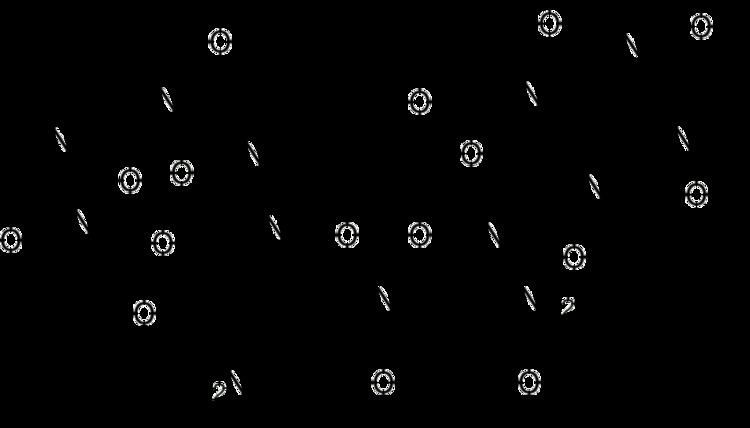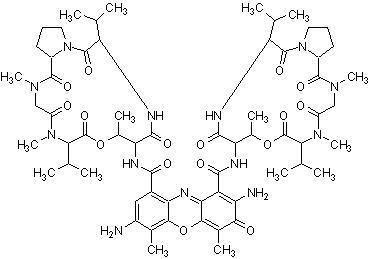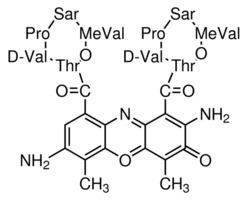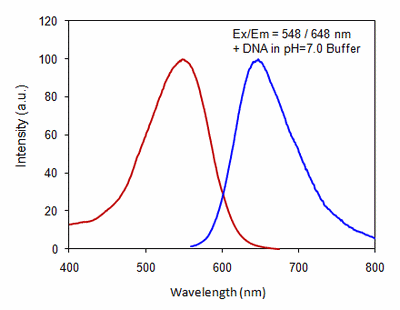Formula C62H87N13O16 Appearance Red to dark purple powder | Molar mass 1,270.43 g/mol | |
 | ||
7-Aminoactinomycin D (7-AAD) is a fluorescent chemical compound with a strong affinity for DNA. It is used as a fluorescent marker for DNA in fluorescence microscopy and flow cytometry. It intercalates in double-stranded DNA, with a high affinity for GC-rich regions, making it useful for chromosome banding studies.
Contents
Applications

With an absorption maximum at 546 nm, 7-AAD is efficiently excited using a 543 nm helium–neon laser; it can also be excited with somewhat lower efficiency using a 488 nm or 514 nm argon laser lines. Its emission has a very large Stokes shift with a maximum in the deep red: 647 nm. 7-AAD is therefore compatible with most blue and green fluorophores – and even many red fluorophores – in multicolour applications.

7-AAD does not readily pass through intact cell membranes; if it is to be used as a stain for imaging DNA fluorescence, the cell membrane must be permeabilized or disrupted. This method can be used in combination with formaldehyde fixation of samples.

7-AAD is also used as a cell viability stain. Cells with compromised membranes will stain with 7-AAD, while live cells with intact cell membranes will remain dark.
Actinomycin D
The related compound actinomycin D is nonfluorescent, but binds DNA in the same way as 7-AAD. Its absorbance changes when bound to DNA, and it can be used as a stain in conventional transmission microscopy.
